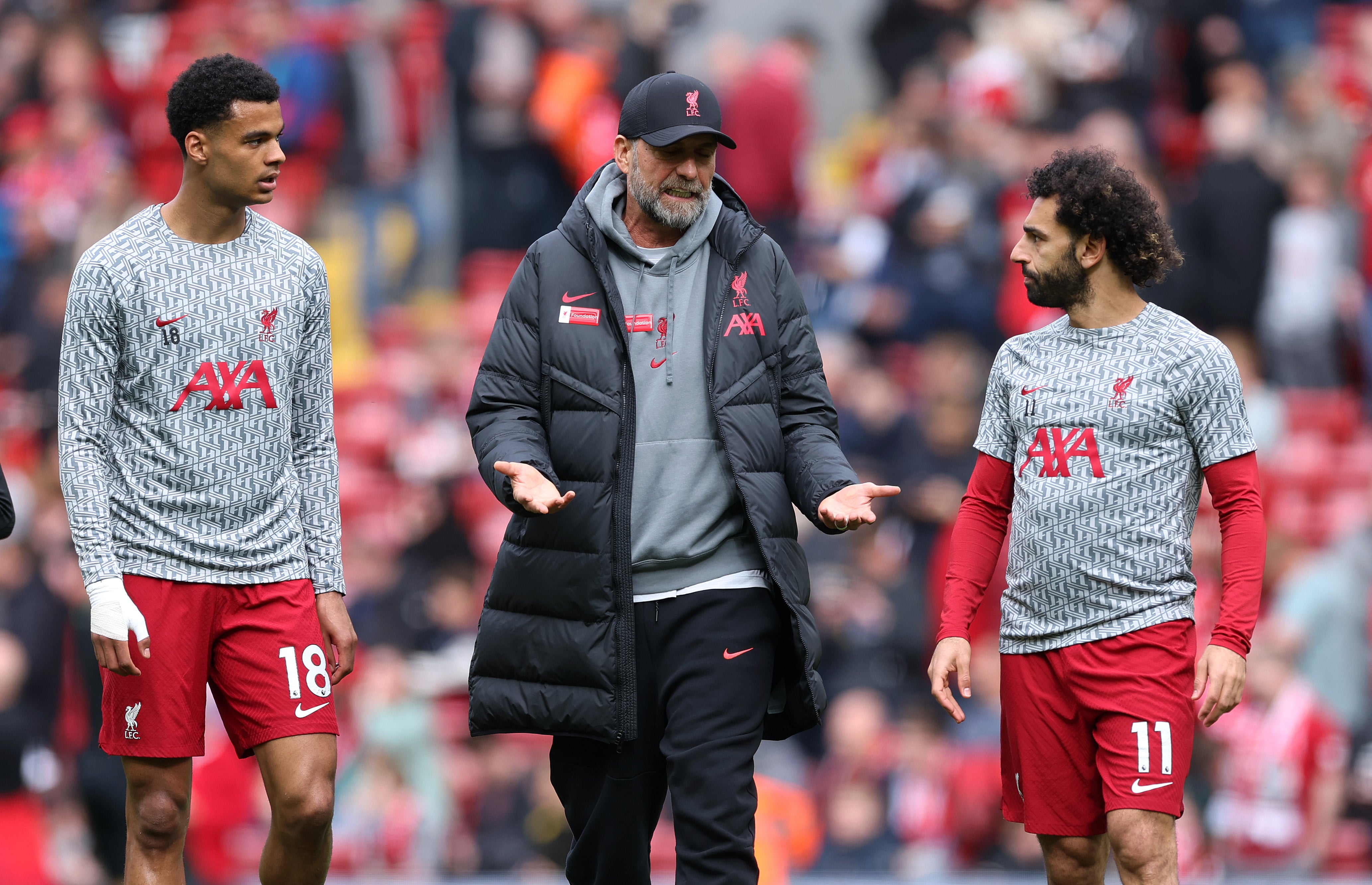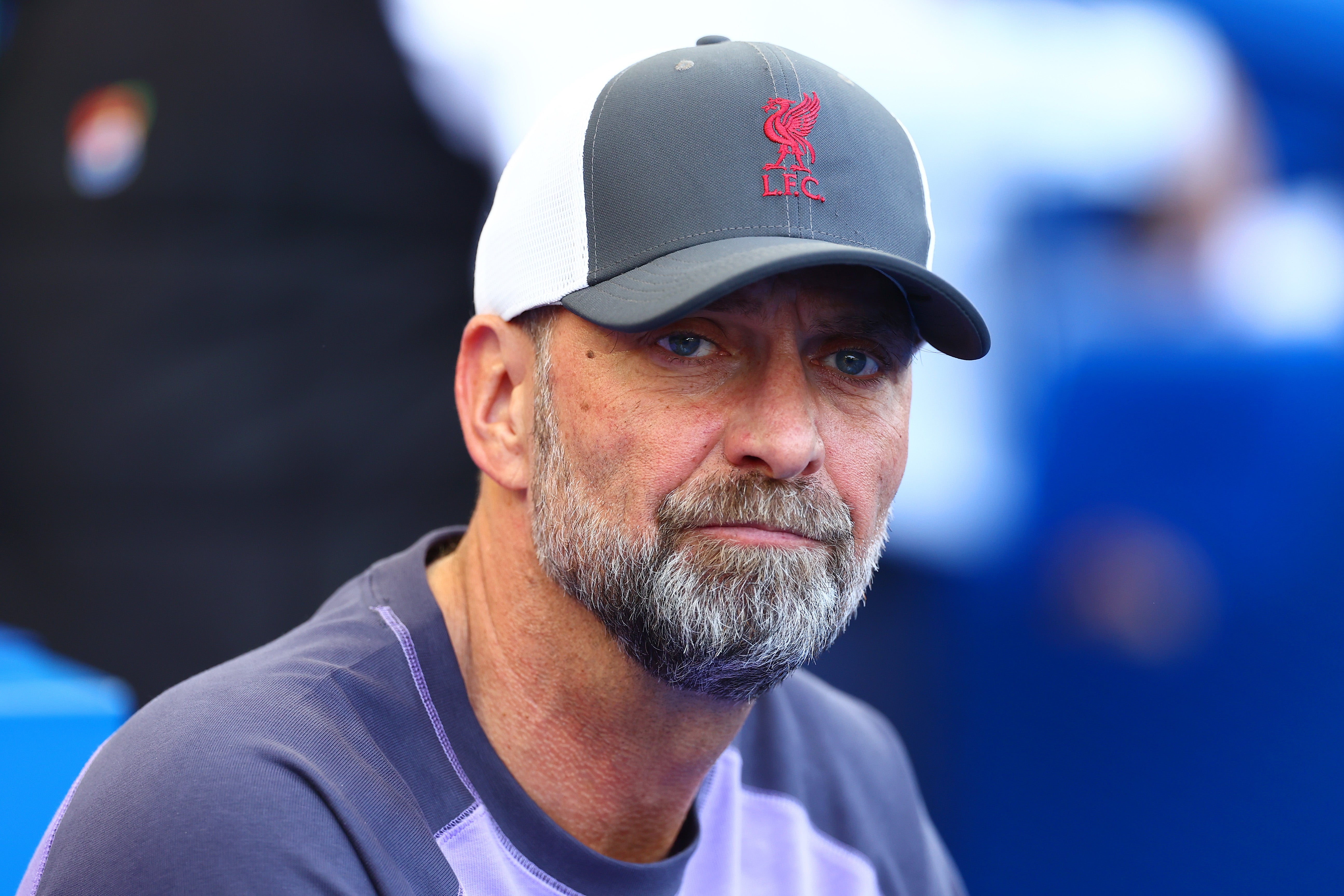Build from the front? Liverpool and Jurgen Klopp are repeating an old trick
Klopp has begun his rebuilding job at the top of his team - and it has led to an entertaining start to the season

Your support helps us to tell the story
From reproductive rights to climate change to Big Tech, The Independent is on the ground when the story is developing. Whether it's investigating the financials of Elon Musk's pro-Trump PAC or producing our latest documentary, 'The A Word', which shines a light on the American women fighting for reproductive rights, we know how important it is to parse out the facts from the messaging.
At such a critical moment in US history, we need reporters on the ground. Your donation allows us to keep sending journalists to speak to both sides of the story.
The Independent is trusted by Americans across the entire political spectrum. And unlike many other quality news outlets, we choose not to lock Americans out of our reporting and analysis with paywalls. We believe quality journalism should be available to everyone, paid for by those who can afford it.
Your support makes all the difference.Build from the back. So the cliché goes. It tends to be the objective of any manager who takes over or constructs a new team. Jurgen Klopp sounded a voice of footballing orthodoxy when he said: “I like to build a team from the defensive side.”
Yet, for the second time, Klopp may be going against the grain and building from the front. “Liverpool Reloaded,” as their manager branded them at the start of the season, have a solitary clean sheet in the Premier League. They have conceded in the first half of all seven other games. But they have scored in all eight games, with at least two goals in six of them and three in each of their Anfield encounters. In the tradition of Liverpool 1.0, the first incarnation of his first great side, they promise entertainment.
Yet if Klopp would like to build from the back, the sense is that, once again, he is building from the front. Rewind to 2016 and Sadio Mane’s debut set the tone for a new team: they won 4-3 at Arsenal in August 2016. They seemed a gung-ho guarantee of goals. Klopp had Mane, Roberto Firmino and then Mohamed Salah in situ before Virgil van Dijk or Alisson Becker were signed, before Trent Alexander-Arnold was a regular.
Now, with Salah still in stellar form, with three consecutive transfer windows each yielding a high-class attacker, in Luis Diaz, Darwin Nunez and Cody Gakpo respectively, with Diogo Jota’s arrival predating theirs, he has five excellent options in attack: despite the job share the competition for places provides, each has at least two league goals already. Salah has five, plus four assists. The new Liverpool are propelled forwards by their forwards.
“I like to build a team from the defensive side,” Klopp nevertheless insisted. “I’m not sure it’s possible again nowadays when you’re in the middle of something. Imagine if we kept clean sheets but didn’t create.”
That was said with a laugh. The pragmatic path to clean sheets to the exclusion of everything else is not for him. “It gives you time for these things when you are new, when things are under average before you come into a new club and you are 14th,” he explained. “Everyone is happy when you get some results, [but] we are not like that. Our team is not set up like that. We have a really talented group together, a creative group in a football sense, and we have to use that, but we have to organise protection. That goes step by step.”

The creativity of that group has been exacerbated by circumstances. Klopp opted to bring in constructive midfielders this summer, in Alexis Mac Allister and Dominik Szoboszlai, before his two preferred destructive options, the defensive duo of Fabinho and Jordan Henderson, made abrupt exits to Saudi Arabia. The profile of a section of the side has changed, the emphasis shifted more to the attack.
All of which may make goals likelier to go in at both ends. There has been less protection than in the heyday of Klopp’s greatest side, the two seasons from 2018-20, but if the four pillars of that rearguard remain, Alisson, Van Dijk, Alexander-Arnold and Andy Robertson have only played together for 289 minutes in the Premier League; now, with the left-back set to have shoulder surgery, they will not be reunited until 2024.
Thus far, Liverpool have shown solidity when they have lost players and shifted tactics, from front-foot football to sitting deeper and counter-attacking. Liverpool defended well with 10 men at Newcastle, brilliantly with nine at Tottenham. They have been more open with a full complement of players.

But Klopp’s reference to organisation was significant, too. His frequent mentions of being “compact” underline the importance of a positional understanding and ensuring no one is exposed. He is searching for a consistency that comes with cohesion, for a 90-minute performance. “To learn to control the game, things that happen with time, there is no short cut to that,” he reflected. “So with the signs we showed so far I am absolutely fine but I know the final destination, I can’t even see yet but that is not a problem.”
Perhaps it was another callback to 2016, to the sense that something was rising, even if it was not fully clear how high it would reach. Klopp detects similar signs elsewhere. “You saw so many teams growing here in the direction we wanted and all became usually better step by step… or the manager had to go,” he said, the last part an aside.
The next step of the rebuilding is likely to come towards the back of the side. The early expectation is that a defensive midfielder and another centre-back will be targets next summer. But for now, with his forwards and his attacking midfielders in place and in the goals, Klopp has begun his rebuilding job at the top of his team.
Join our commenting forum
Join thought-provoking conversations, follow other Independent readers and see their replies
Comments